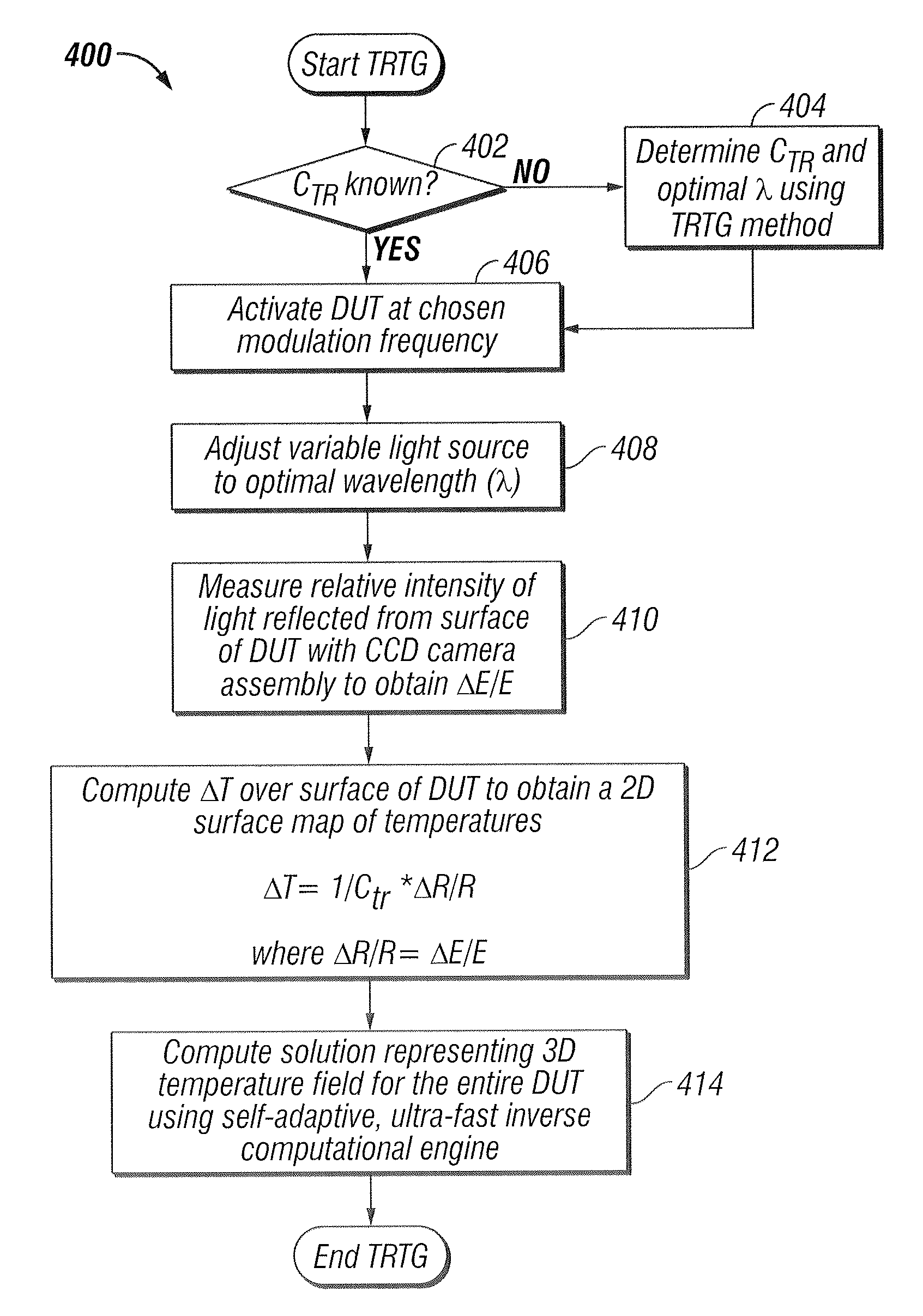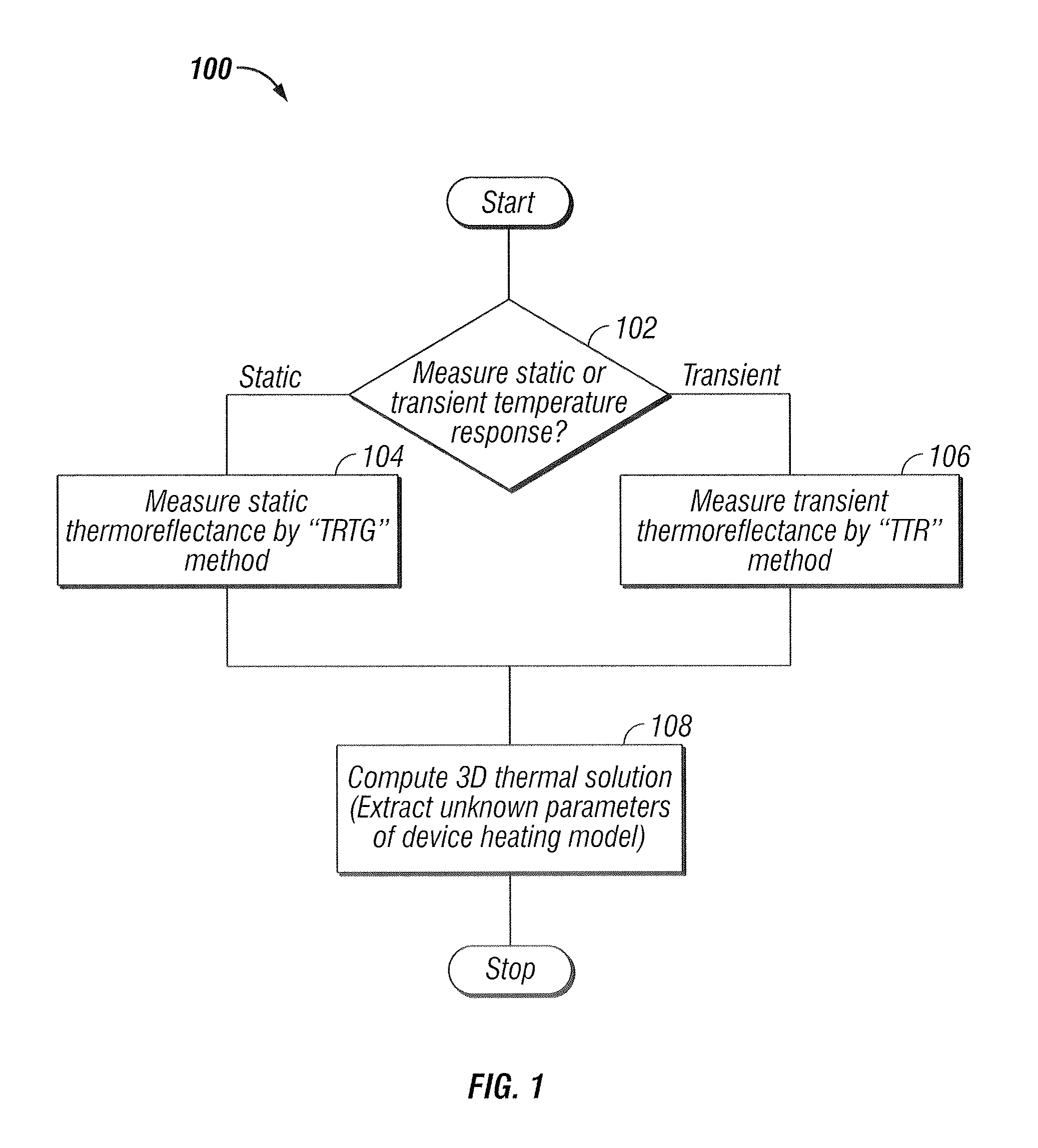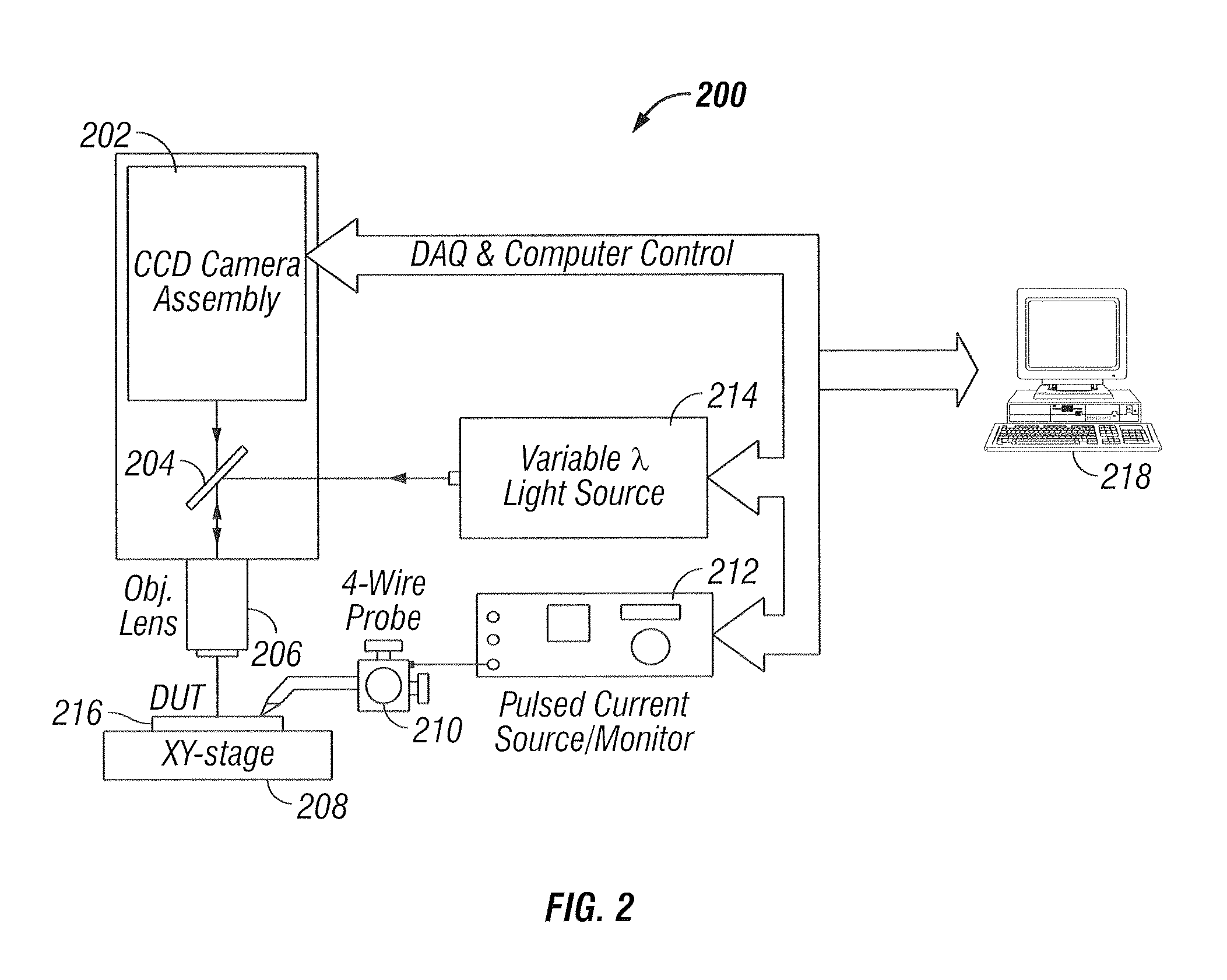Thermography measurement system for conducting thermal characterization of integrated circuits
a technology of thermal characterization and integrated circuit, which is applied in the direction of electrical/magnetic measurement arrangements, amplifier modifications to reduce noise influence, compasses, etc., can solve the problems of reducing performance and reliability, understanding and determining the thermal behavior of modern electronics, and computational approaches can provide, so as to achieve accurate and efficient thermal characterization of fully three-dimensional active micro-devices, fast and accurate resolution of geometric and material complexity, the effect of high spatial and temporal accuracy
- Summary
- Abstract
- Description
- Claims
- Application Information
AI Technical Summary
Benefits of technology
Problems solved by technology
Method used
Image
Examples
Embodiment Construction
[0031]FIG. 1 represents the high-level flow diagram of the basic operation of the present invention as it is used to measure the three-dimensional temperature field distribution of an active semiconductor micro-device. To conduct a full three-dimensional temperature characterization of a device requires essentially three steps 100. First, because different equipment is required, a decision must be made as to whether the static or transient thermal distribution is sought 102. Second, a two-dimensional thermal measurement is conducted. If static data is required, then CCD camera-based Thermoreflectance Thermography system (TRTG) is used 104. If transient data is required, then a laser-based TRTG is used 106. Third, a three-dimensional thermal characterization is computed from the two-dimensional data and various device parameters 108.
[0032]The present invention is based on the thermoreflectance (TR) method, where the change in surface temperature is measured by detecting the change in...
PUM
 Login to View More
Login to View More Abstract
Description
Claims
Application Information
 Login to View More
Login to View More - R&D
- Intellectual Property
- Life Sciences
- Materials
- Tech Scout
- Unparalleled Data Quality
- Higher Quality Content
- 60% Fewer Hallucinations
Browse by: Latest US Patents, China's latest patents, Technical Efficacy Thesaurus, Application Domain, Technology Topic, Popular Technical Reports.
© 2025 PatSnap. All rights reserved.Legal|Privacy policy|Modern Slavery Act Transparency Statement|Sitemap|About US| Contact US: help@patsnap.com



